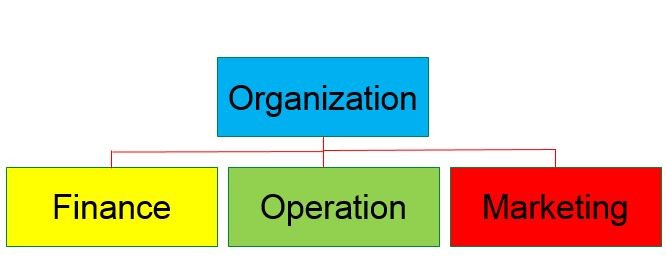
Operations Management- Part 2 (Relationship of Operation Management with Other Departments)
In the previous article, we briefly explained what operational management is and why it is important.
In this section, we will look at the relationship of operation management with other departments in an entire organizational structure. We will also refer to examples of operations in different sectors.
The ideal situation for a business organization is to achieve an economic match of supply and demand. The key functions on the supply side are operations and supply chains, and sales and marketing on the demand side.
While the operations function is responsible for producing products and/or delivering services, it needs the support and input from other areas of the organization. Business organizations have three basic functional areas, as shown in Figure 1:
Finance, marketing, and operations. It doesn’t matter whether the business is a retail store, a hospital, a manufacturing firm, a car wash, or some other type of business; all business organizations have these three basic functions.
- Figure 1 -
Finance is responsible for securing financial resources at favourable prices and allocating those resources throughout the organization, as well as budgeting, analyzing investment proposals, and providing funds for operations. Marketing is responsible for assessing consumer wants and needs, and selling and promoting the organization’s goods or services. Operations are responsible for producing the goods or providing the services offered by the organization.
Operations and supply chains are intrinsically linked, and no business organization could exist without both. A supply chain is the sequence of organizations—their facilities, functions, and activities—that are involved in producing and delivering a product or service. The sequence begins with basic suppliers of raw materials and extends all the way to the final customer, as seen in Figure 2.
- Figure 2 -
Facilities might include warehouses, factories, processing centres, offices, distribution centres, and retail outlets. Functions and activities include forecasting, purchasing, inventory management, information management, quality assurance, scheduling, production, distribution, delivery, and customer service.
The creation of goods or services involves transforming or converting inputs into outputs. Various inputs such as capital, labour, and information are used to create goods or services using one or more transformation processes. To ensure that the desired outputs are obtained, an organization takes measurements at various points in the transformation process ( feedback ) and then compares them with previously established standards to determine whether corrective action is needed ( control ). Figure 3. depicts the conversion system.
- Figure 3 -
Table 1. provides some examples of inputs, transformation processes, and outputs. Although goods and services are listed separately in Table 1. , it is important to note that goods and services often occur jointly. For example, having the oil changed in your car is a service, but the oil that is delivered is good. Similarly, house painting is a service, but the paint is good. The goods–service combination is a continuum. It can range from primary goods, with little service, to primarily service, with few goods.
-Table 1 -
The essence of the operations function is to add value during the transformation process: Value-added is the term used to describe the difference between the cost of inputs and the value or price of outputs. In nonprofit organizations, the value of outputs (e.g., highway construction, police and fire protection) is their value to society; the greater the value-added, the greater the effectiveness of these operations. In for-profit organizations, the value of outputs is measured by the prices that customers are willing to pay for those goods or services. Firms use the money generated by value-added for research and development, investment in new facilities and equipment, worker salaries, and profits. Consequently, the greater the value-added, the greater the number of funds available for these purposes. Value can also be psychological, as in branding. Many factors affect the design and management of operations systems. Among them are the degree of involvement of customers in the process and the degree to which technology is used to produce and/or deliver a product or service. The greater the degree of customer involvement, the more challenging it can be to design and manage the operation. Technology choices can have a major impact on productivity, costs, flexibility, and quality and customer satisfaction.
Not: Notes, figures and tables were taken from the operation managements books.




Offshore QC Focal Point at Aker Solutions
2yTHANKS FOR THE SHARING
Quality Assurance Executive at Suntory PepsiCo Vietnam Beverage
3yThanks for your post, it was very useful to me
Your Mortgage Broker over 22 years experience. با بیش از ۲۰ سال تجربه در زمینه انواع وام ها Contact me: 416-402-1410 MCC-iBrokerPower Capital 10538
5yGrate post !!